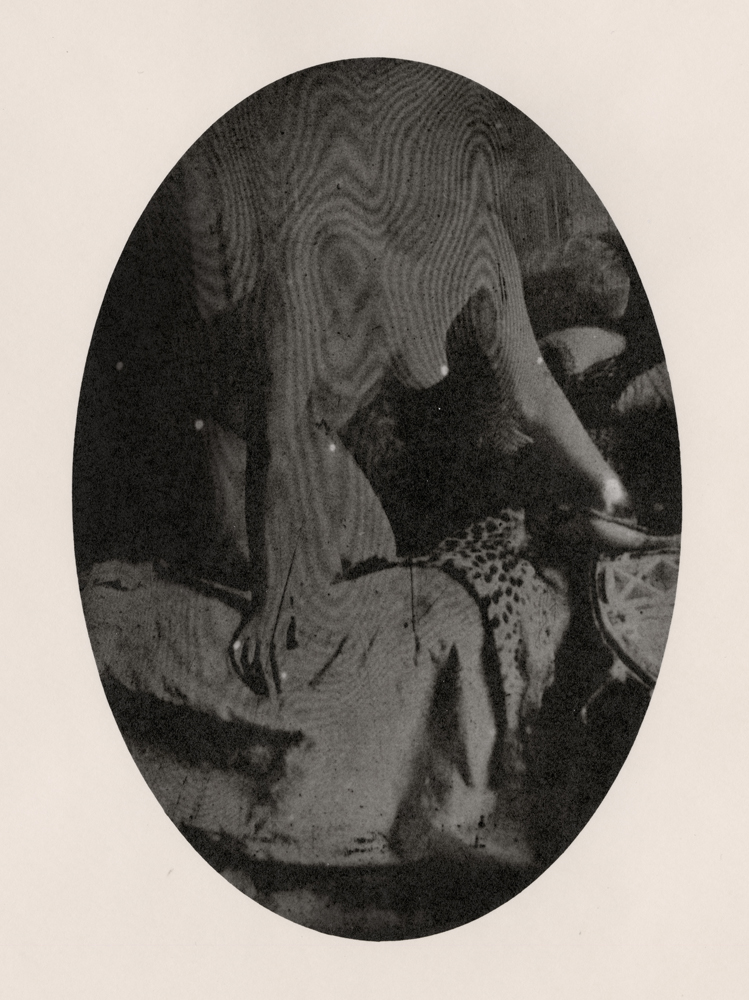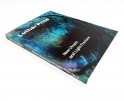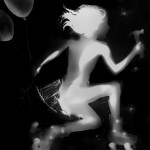Jennifer Schlesinger: The States Project: New Mexico
I can’t think of a better person to tackle the task of New Mexico States Project Editor than Jennifer Schlesinger. Jennifer navigates many photographic arenas in New Mexico as an art photographer, gallery director, curator, educator, and all-things-photography enthusiast. As the Gallery Director of Verve Gallery in Santa Fe, Jennifer is intimately involved with regional and international photographers, making the selection process for this week even more challenging. New Mexico draws a host of classic and historical photographers, but the state is also home to a number of innovative undergraduate and graduate programs that are inspiring a new generation of photographic artists. She has quite a creative well from which to draw.
Jennifer has a new body of work, Vignettes – Tales from Above. We are sharing five images from this on-going series, plus a selection of work from previous projects. An interview with Jennifer follows.
Jennifer Schlesinger is an artist, curator, and educator based out of Santa Fe, New Mexico. For the past five years her artistic medium of choice has been the 19th Century Albumen process and her work primarily focuses on the landscape and how humans philosophically interact with the natural world around them. Schlesinger graduated from the College of Santa Fe in 1998 with a B.A. in Photography and Journalism. Schlesinger has exhibited widely at Southwest regional institutions such as the Marion Center for Photographic Arts (SFUAD), Santa Fe Art Institute, and the New Mexico Museum of Art, as well as national institutions such as the Southeast Museum of Photography, and the Chelsea Art Museum. Her work has been published online and in print with international publications such as Black and White Magazine (U.S and UK), the cover article for Diffusion Magazine Volume III, and Fotoritim in Turkey. Schlesinger is represented in many public collections, including the Southeast Museum of Photography, FL; The New Mexico Museum of Art; and the New Mexico History Museum/Palace of the Governors Photo Archives. She has received several honors in recognition of her work including a Golden Light Award in Landscape Photography from the Maine Photographic Workshops, and the Center for Contemporary Arts Photography Award in Santa Fe, New Mexico, both in 2005.
She has been awarded many distinctive nominations such as the Santa Fe Prize for Photography by the Center, and the Eliot Porter Fellowship by the New Mexico Council for Photography. In 2015, she was a Finalist in the Julia Margaret Cameron Award Alternative Process category. In addition to her artistic career, she was also the Assistant Director of Santa Fe Art Institute from 2003-2005 and has been the Director of VERVE Gallery of Photography since 2005. Schlesinger has taught Adjunct at the College of Santa Fe and continues to teach via workshops through the Santa Fe Photographic Workshops and other venues. She also serves on many photographic panels as a Reviewer for portfolio reviews and as a juror for worldwide photographic competitions.
Vignettes – Tales from Above
The images in this series elaborate on the myths and legends of the constellations by giving them life through visual interpretation. The inspiration for these images are the constellation legends that run through many different cultures including the Chinese, Indian, and Greek myths. I am fascinated with how stories get passed down through generations and eventually take on different meanings and interpretations based on who is telling them, why, and in what context. These vignettes are my interpretations from the stories of the stars.
Prints are handprinted by the artist as toned gelatin silver prints. They are tiered in price by edition number, printed on 8×10” paper, (sizes are variable based on image). Edition of 9 with 3 AP. Prints are signed, dated, editioned, and titled on print recto.
Let’s start with discussing the state of New Mexico. What is unique to New Mexico that draws so many artists and how has living in New Mexico shaped your work?
There is a very rich photographic history here in New Mexico that began early on in the history of photography itself. In the 1860’s, Timothy O’Sullivan came through the Southwest on an expedition organized by the federal government to document the new frontiers in this region. This led the way for a host of early 1900’s Modernist photographers such as Paul Strand, Edward Weston and then many others throughout the 20th century to come through New Mexico. I think the unusual landscape we have here has intrigued artists for a long time but especially photographers because of the light created by the vast sky, and, in particular, the unique light created by being in the high desert of Santa Fe and Taos. Of course, there is the major connection to nature and landscape here through the Native American traditions and the Pueblo history within that culture. It’s funny because when I moved here in 1996 I was coming from a place of my own photographic interest in making urban street photography and I thought, what can I possibly photograph in New Mexico that will be urban? Well after completing my photographic education and living here for many years, it became so ingrained in me to photographically incorporate the natural landscape in the way that I used to incorporate the urban landscape. Living here and having this spectacular performance of nature all around me on a daily basis just innately became part of my artwork.
Is there a photographic community in New Mexico?
Absolutely. We have a high concentration of photographic industry here – publishers, galleries, private dealers, collectors, photographers, printers, educators, darkroom suppliers, museum curators, workshop and administrative professionals, etc., as well as a very collaborative sensibility. It’s unprecedented, the support and involvement that one can find by living within and being a part of the New Mexico photographic community.
With the Santa Fe Workshops and CENTER located in Santa Fe, many photographers come to the state for short periods of time, but what about those who live there year round?
I would say most of those who visit wind up moving here! Seriously, though, because we are a relatively small city with an economy based strongly on the tourist industry, there is still a struggle for the younger artists and professionals to find and maintain full-time artistic positions compared to bigger cities. So it is a compromise, living in New Mexico. But I have always told students, and I continue to tell my daughter, that you can truly do anything you want, you just have to have the passion and be creative in ways in which to make it viable.
We associate New Mexico with photographic traditions, where artists still use the darkroom and capture sensuous landscapes. Have you found NM photographers who are changing that perception?
I think, if anything, there is probably a higher concentration of those using darkroom and alternative process techniques here. We are lucky to be the central location for darkroom chemical suppliers Bostick & Sullivan who ship worldwide some of the rarest darkroom chemicals you can find. They, combined with the resurgence of such processes, still continue to make New Mexico associated with very innovative photographic approaches to process. In contrast to that, is that the Santa Fe Photographic Workshops teach some of the most advanced digital workshops you can find in the country – and most of those instructors are New Mexico based. I may be biased, but some of my favorite photographers in the U.S. are located in New Mexico.
I first met you as a Gallery Director and didn’t even know you were a talented photographer in those early days. When did you come to photography?
Yes, wearing two hats can be a blessing and a curse! However, I am first and foremost an artist I would say, it is the reason why I moved to New Mexico – to study the art of photography in a formal college education. I came to photography in 1995 and then in the years after college, I came into the administration aspect because I am naturally good at compartmentalizing and organizing, and I combined that with my absolute love of editing and curating. Photography as my creative art form comes because I just can’t NOT do it, it’s why I consider myself an artist first.
How do you balance celebrating other photographic voices with your own?
It’s natural that we are drawn to certain types of work that resonate with our own style and interests. For me, it feels like the work that I like to collect, curate, hang on my own walls, promote, etc. are in the same style of the work I like to make – that feels like a natural place of artistic being. In a lot of cases, the pieces I can be drawn to are those that I can’t make, or don’t know how to make – and which can inspire me on that level. I also think that one of the best parts of getting older as an artist – as one produces and makes bodies of work over time – is that we can start to see who our influences are/were, also how our work has grown, and then how it has a thread that runs through it. When I was just starting out I would be inspired by influences and try to mimic them, but now I feel like I can take influences and incorporate them into my own style that I’ve developed over time. That aspect of getting older – the wisdom to be able to look back – really helps me creatively move forward.
When I think of your work, it feels universal and not of a particular place. Have you purposefully avoided New Mexico as a recognizable character in your work?
I use the natural world around me in my photographs to create metaphors and poetically translate the human experience. Be it in New Mexico or some other landscape I may be visiting, I like to use an archetype of nature that is familiar to people in general so we can relate through my photographs. So yes, I suppose for the most part, I try to have my work be less about where it was taken, how it was made, and who is in the photo, and more about what the viewer can relate to as feeling familiar and universal. However, I do believe that those who know New Mexico’s well will be able to recognize certain landscapes in my work.
What historical process intrigues you the most?
Well, I was enamored with albumen for a long time. I still am. On the right paper, for me, it produces one of the most unique lustres and tonalities that no other photographic process can compete with. I suppose after that, I am really drawn to daguerreotypes, tintypes, ambrotypes, – not that I have much, if any, experience in using all those processes – but the outcome yields such incredible mood which just captivates me. I am always intrigued by how artists use historic photographic processes in a contemporary way. I also have an ongoing romance with a good old gelatin silver print.
And finally, describe your perfect day!
I imagine you are speaking of the kind of day that assumes all major responsibilities are taken care of! So the perfect day for me includes going for a good long run, spending some quality time with my daughter, spending quality time with my partner, working in the darkroom on new imagery, then calling it a day with a glass of wine, a fantastic meal, and topping it off with chocolate, and putting my feet up. Absolute perfection!
Posts on Lenscratch may not be reproduced without the permission of the Lenscratch staff and the photographer.
Recommended
-
Luther Price: New Utopia and Light Fracture Presented by VSW PressApril 7th, 2024
-
Artists of Türkiye: Sirkhane DarkroomMarch 26th, 2024
-
European Week: Sayuri IchidaMarch 8th, 2024
-
European Week: Steffen DiemerMarch 6th, 2024
-
Rebecca Sexton Larson: The Reluctant CaregiverFebruary 26th, 2024











































































